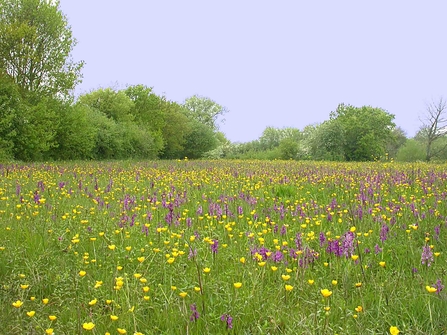Ten years ago, the former Prince of Wales launched Coronation Meadows in 2013 to honour the 60th year of the late Queen’s accession to the throne.
In the face of the catastrophic loss of 97% of our wildflower meadows since the 1930s, the plan was to create new and restored meadows using donor seed from remaining fragments of ancient and traditional meadows.
The Wildlife Trusts and Plantlife – charities for whom the former Prince of Wales was patron – worked together to identify 60 species-rich meadows which are known as Coronation Meadows, one for every year of the Queen’s reign at that time. These special places became donors to provide precious seed to increase the amount of valuable and beautiful wildflower habitat elsewhere.
The charities have done an audit of the success of the project which reveals that a fantastic 101 new wildflower meadows have been created or restored since the Coronation Meadows project began a decade ago.
The charities are delighted that the Coronation Meadows project has increased the number of wildflower meadows and benefitted a vast array of wildlife, from bees and butterflies to bats and birds. The area is still expanding as the charities continue to harvest and spread the wildflower seed in localities close to the original sites so that the distinctive character of each area’s flora is preserved.
